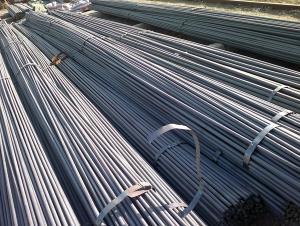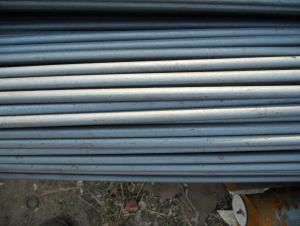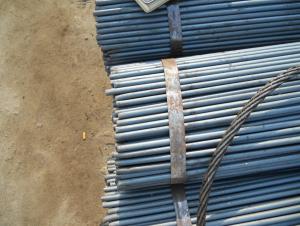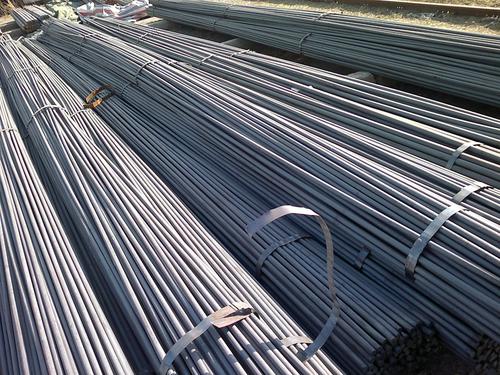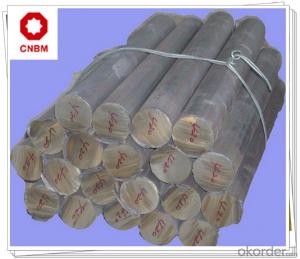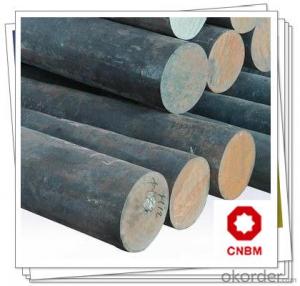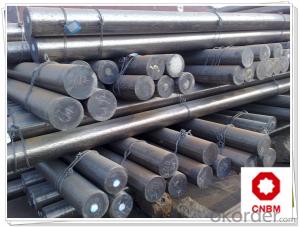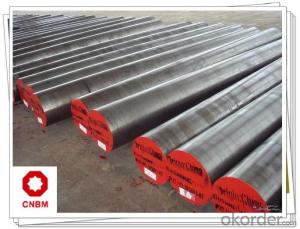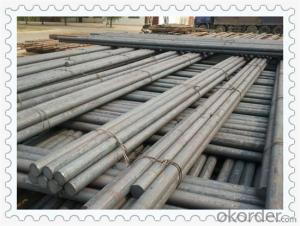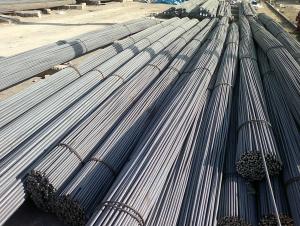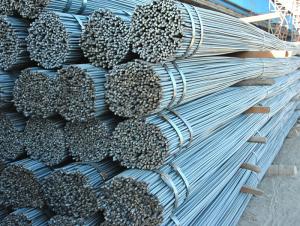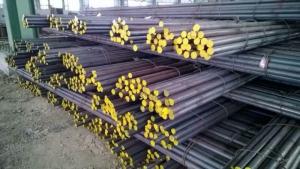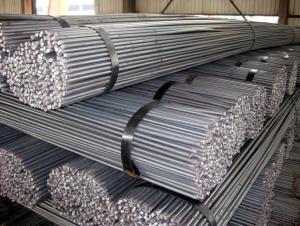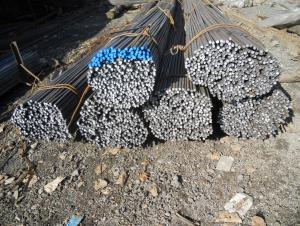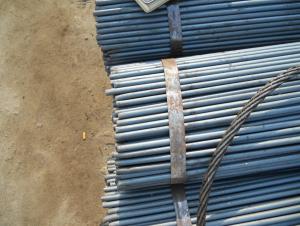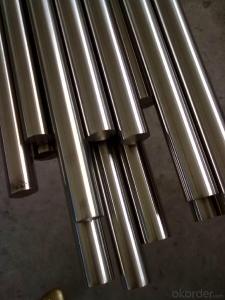Plain Bar
- Loading Port:
- China Main Port
- Payment Terms:
- TT OR LC
- Min Order Qty:
- -
- Supply Capability:
- -
OKorder Service Pledge
OKorder Financial Service
You Might Also Like
Specifications of High Quality Round Bar
1. Grade: GB, JIS, ASTM, EN
2. Grade: Q235, SS400, A36, S235JR
3. Diameter and mass: As below
Diameter | Mass | Diameter | Mass | Diameter | Mass |
(mm) | (kg/m) | (mm) | (kg/m) | (mm) | (kg/m) |
6 | 0.22 | 22 | 2.98 | 53 | 17.30 |
7 | 0.30 | 24 | 3.55 | 56 | 19.30 |
8 | 0.40 | 25 | 3.85 | 60 | 22.20 |
9 | 0.50 | 26 | 4.17 | 63 | 24.50 |
10 | 0.62 | 28 | 4.83 | 65 | 26.00 |
11 | 0.75 | 30 | 5.55 | 70 | 30.20 |
12 | 0.89 | 32 | 6.31 | 75 | 34.70 |
13 | 1.04 | 34 | 7.13 | 80 | 39.50 |
14 | 1.21 | 36 | 7.99 | 85 | 44.50 |
15 | 1.39 | 38 | 8.90 | 90 | 49.90 |
16 | 1.58 | 40 | 9.86 | 95 | 55.60 |
17 | 1.78 | 42 | 10.90 | 100 | 61.70 |
18 | 2.00 | 45 | 12.50 | 120 | 88.85 |
19 | 2.23 | 48 | 14.20 | 140 | 120.93 |
20 | 2.47 | 50 | 15.40 | 150 | 138.82 |
4. Material: Mild Steel
5. Heat treatment of high quality steel:
Fire: Isothermal annealing temperature is 800 ~ 880 °C, with 10 ~ 20 °C, the furnace cooling to about 600 °C, hardness above HB269.
Preheat temperature: 730-730 °C
Quenching temperature: 1190-1210 °C
Tempering temperature: 540-595 °C
Cold drawn, hardness 285 HBS
Cold drawn after annealing condition, hardness 277 HBS
Quenching methods: oil quenching, air cooling or salt bath quenching
Usage and Applications of High Quality Round Bar
1) Suitable for making various strong cutting tool abrasion resistance, impact resistance.
2) Used to produce all kinds of high hard and super hard saw blade, drill, tap, broach, gear hob and various kinds of milling cutter.
3) Used for advanced punching die, screw die, and the toughness and complicated shape of the punch, etc.
4) Is used for cold forging die and drawing mode, etc.
5) Recommended watchcase factory, screw factory and other cold stamping products industry use.
Packaging & Delivery of High Quality Round Bar
Packaging Detail: All goods are packed in bundle with steel strips and shipped by break bulk vessel or container (depend on target market and different ports)
Delivery Detail: 45 days
Trade terms: FOB, CFR, CIF
MOQ: 25 tons per specification; we can negotiate the quantity if the specification is normal or we have stock of one specification.
Weight: The price invoicing on theoretical weight basis or actual weight basis depends on customer’s request.
Shipment: The shipment of bulk break or container is depends on customer’s request and the situation of the port of destination.
Documents given: Full set of original clean on board bill of lading; Original signed commercial invoice; Original packing list; Policy of insurance; Certificate of origin and what the target market needs.
Production Flow of High Quality Round Bar
The common processes are preheated forging quenching, dual refinement solution process, cooling quenching and isothermal quenching. We use heat treatment for dual refinement solution process. The main measures process is high temperature solution and refinement cycle. High temperature solution can improve the carbide morphology and particle size. The aim is to make the loop refinement ultrafine austenite grains.
- Q: What kind of nuts do you need for round 20 rounds?
- The nut is connected to mechanical equipment parts, through the inside of the thread, the same specifications of nuts and bolts to connect together, such as M4-P0.7 and M4-P0.7 only bolt nut series connection (nut, M4 nut diameter is about 4mm, 0.7 fingers between the two thread distance of 0.7mm); US made products as well, such as screw nut only with the 1/4-20 1/4-20's collocation (1/4 refers to the nut inner diameter is about 0.25 inches, 20 inches each, 20 teeth).Self locking nut, lock nut, locking nut, four claw nut, the nut is screwed into the nut, screw rod nut insurance connecting nut cap nut six self-locking angle of anchor bolt with nut, six special angle crown thin nut eyenut.
- Q: What is the maximum length available for steel round bars?
- The maximum length available for steel round bars can vary depending on the supplier and the specific requirements, but typically it can range from 12 to 24 feet.
- Q: What is the difference between seamless and welded steel round bars?
- The main difference between seamless and welded steel round bars lies in their production process. Seamless steel round bars are made by piercing a solid steel billet to create a hollow tube, which is then elongated and rolled to the desired size and shape. On the other hand, welded steel round bars are formed by welding together two or more pieces of steel, typically using a fusion process. This results in a visible seam along the length of the bar. While seamless bars offer a smoother and more uniform surface, welded bars are generally more cost-effective and readily available in a wider range of sizes and lengths.
- Q: What are the advantages of using nickel-chromium-molybdenum alloy steel round bars?
- The advantages of using nickel-chromium-molybdenum alloy steel round bars include high strength, excellent corrosion resistance, good toughness, and superior heat resistance. These properties make the alloy steel bars ideal for applications in industries such as aerospace, oil and gas, and chemical processing, where durability and reliability are crucial. Additionally, the alloy's resistance to oxidation and high-temperature environments makes it suitable for use in high-stress applications, such as turbine engine components and pressure vessels.
- Q: Are steel round bars available in different shapes other than round?
- No, steel round bars are specifically designed and manufactured in a cylindrical shape.
- Q: Can steel round bars be used for making suspension springs?
- Yes, steel round bars can be used for making suspension springs. Steel is a commonly used material for suspension springs due to its high strength and durability. The round bars can be forged or shaped into the desired spring shape and then heat-treated to achieve the desired spring characteristics. Additionally, steel round bars can be easily machined and drilled to accommodate different suspension systems and components. However, it is important to consider the specific requirements and load capacity of the suspension system to ensure that the chosen steel round bars are suitable for the intended application.
- Q: What are the different types of steel round bar alloys for improved corrosion resistance?
- There are several types of steel round bar alloys that are known for their improved corrosion resistance. Some of the commonly used alloys include stainless steel, weathering steel, and duplex stainless steel. 1. Stainless Steel: This alloy contains a minimum of 10.5% chromium, which forms a thin, protective layer of chromium oxide on the surface of the steel. This layer acts as a barrier against corrosion, making stainless steel highly resistant to rust and other forms of corrosion. Different grades of stainless steel, such as 304 and 316, offer varying levels of corrosion resistance depending on the specific application. 2. Weathering Steel: Also known as Corten steel, weathering steel develops a protective rust-like appearance when exposed to the weather. This self-healing characteristic makes it resistant to atmospheric corrosion. The addition of copper, chromium, and nickel in weathering steel enhances its corrosion resistance and enables it to withstand harsh environmental conditions without the need for painting. 3. Duplex Stainless Steel: Duplex stainless steel is a combination of austenitic and ferritic stainless steels. This alloy offers excellent corrosion resistance due to its high chromium and molybdenum content. Duplex stainless steel is particularly resistant to localized corrosion, such as pitting and crevice corrosion, making it suitable for applications in aggressive environments like marine and chemical industries. It is important to note that the choice of steel round bar alloy for improved corrosion resistance depends on the specific application requirements and environmental conditions. Consulting with a materials engineer or corrosion specialist can help determine the most suitable alloy for a particular application.
- Q: How do steel round bars contribute to sustainable construction?
- Steel round bars contribute to sustainable construction in several ways. Firstly, steel is a highly durable and long-lasting material, which means that structures built using steel round bars have a longer lifespan and require less maintenance and repairs over time. This reduces the need for frequent replacement, thereby conserving resources and reducing waste. Secondly, steel is a recyclable material, and steel round bars can be easily recycled and reused in other construction projects. By promoting the use of recycled steel, we can reduce the demand for raw materials and minimize the environmental impact associated with steel production. Additionally, steel round bars offer excellent structural strength and flexibility, allowing for more efficient designs and optimized use of materials. This results in lighter and more sustainable structures that require fewer resources to construct. Lastly, steel round bars are often used in reinforced concrete structures, which can enhance the durability and seismic resistance of buildings. By utilizing steel reinforcement, we can ensure the longevity and safety of structures, reducing the need for reconstruction and enhancing the resilience of our built environment. Overall, steel round bars contribute to sustainable construction by promoting durability, recyclability, resource efficiency, and improved structural performance in buildings and infrastructure projects.
- Q: Can steel round bars be heat treated for improved strength?
- Steel round bars can undergo heat treatment for enhanced strength. This treatment involves subjecting the steel to specific heating and cooling procedures to modify its microstructure and properties. The most common techniques used for heat treating steel round bars are quenching and tempering. During quenching, the steel round bar is heated to a high temperature and rapidly cooled by immersing it in a quenching medium like water, oil, or polymer. This rapid cooling aids in hardening the steel by transforming its microstructure into a tougher and stronger martensitic structure. Following quenching, the steel round bar is often tempered to reduce brittleness and increase toughness. Tempering includes reheating the quenched steel to a lower temperature and gradually cooling it. This process relieves the internal stresses formed during quenching and allows the steel to achieve a balance between hardness and toughness, resulting in improved strength. It is important to consider that the specific heat treatment process and parameters rely on the type and grade of steel used. Therefore, it is advisable to consult with a metallurgical expert or refer to the manufacturer's guidelines to determine the appropriate heat treatment process for a specific steel round bar and achieve the desired strength improvement.
- Q: What are the different types of steel round bar alloys for improved machinability and strength?
- Some of the different types of steel round bar alloys for improved machinability and strength include free-cutting steel, alloy steel, and tool steel. Free-cutting steel is specifically designed to be easily machinable, allowing for faster and more efficient machining processes. Alloy steel contains various additional elements such as chromium, nickel, or molybdenum, which enhance its strength and wear resistance. Tool steel is a high-performance alloy that is often used in the production of cutting tools and machinery components, offering exceptional hardness and durability.
Send your message to us
Plain Bar
- Loading Port:
- China Main Port
- Payment Terms:
- TT OR LC
- Min Order Qty:
- -
- Supply Capability:
- -
OKorder Service Pledge
OKorder Financial Service
Similar products
Hot products
Hot Searches
Related keywords
